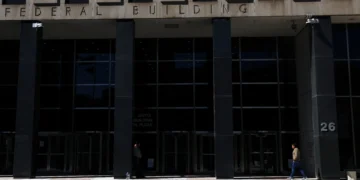According to a report published by FedWeek, the Public Buildings Reform Board submitted a report to Congress last month revealing that the median occupancy rate of many federal headquarters has plummeted to a mere 30% of pre-pandemic levels.
This dramatic decline in office space utilization is rocking commercial real estate markets in major metros and is largely attributed to the widespread adoption of telework (remote work/hybrid-related) policies in the post-pandemic economy.
The report warns that the current situation of nearly empty federal buildings is unsustainable both financially and politically.
The underutilization of federal office space has resulted in rising costs and unnecessary spending reaching unprecedented levels.
Additionally, the environmental impact of heating and cooling these nearly vacant buildings has raised concerns about the carbon emissions generated per person.
According to another report published by The Washington Times, in D.C., federal agencies only used 12% of their headquarters space in the nation’s capital last year. The drastic decrease in physical office presence has had significant economic repercussions for the city, leading to reduced weekday economic activity. It’s projected that D.C. could face an $800 million budgetary deficit for the fiscal year 2025.
As remote work becomes more entrenched and businesses adapt to evolving market conditions, commercial markets are likely to undergo further transformations this year. The underutilization of federal office spaces underscores the ongoing recalibration of office space demand in response to the pandemic’s lasting influence.


 Dr. Gleb Tsipursky – The Office Whisperer
Dr. Gleb Tsipursky – The Office Whisperer Nirit Cohen – WorkFutures
Nirit Cohen – WorkFutures Angela Howard – Culture Expert
Angela Howard – Culture Expert Drew Jones – Design & Innovation
Drew Jones – Design & Innovation Jonathan Price – CRE & Flex Expert
Jonathan Price – CRE & Flex Expert











